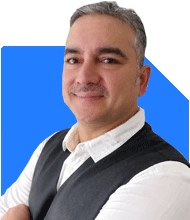Jigar Patel | Answer |Ask -Follow
Stock Market Expert - Answered on Feb 23, 2024
He has around seven years of experience in the stock markets and specialises in sharing outlooks based on technical analysis.
Patel has a PGPM (Finance) certification from the International Institute of Finance Markets.... more

Ihave 500 shares of NECC. Whether it is good?
You may like to see similar questions and answers below
Samraat Jadhav |2508 Answers |Ask -Follow
Stock Market Expert - Answered on May 08, 2023
Advait Arora | Answer |Ask -Follow
Financial Planner - Answered on Aug 28, 2023
Samraat Jadhav |2508 Answers |Ask -Follow
Stock Market Expert - Answered on Jul 13, 2023
Advait Arora | Answer |Ask -Follow
Financial Planner - Answered on Jan 18, 2024
Ramalingam Kalirajan |10893 Answers |Ask -Follow
Mutual Funds, Financial Planning Expert - Answered on Dec 15, 2025
Ramalingam Kalirajan |10893 Answers |Ask -Follow
Mutual Funds, Financial Planning Expert - Answered on Dec 15, 2025
Radheshyam Zanwar |6746 Answers |Ask -Follow
MHT-CET, IIT-JEE, NEET-UG Expert - Answered on Dec 15, 2025
Ramalingam Kalirajan |10893 Answers |Ask -Follow
Mutual Funds, Financial Planning Expert - Answered on Dec 15, 2025
Ramalingam Kalirajan |10893 Answers |Ask -Follow
Mutual Funds, Financial Planning Expert - Answered on Dec 15, 2025
Ramalingam Kalirajan |10893 Answers |Ask -Follow
Mutual Funds, Financial Planning Expert - Answered on Dec 15, 2025
Samraat Jadhav |2508 Answers |Ask -Follow
Stock Market Expert - Answered on Dec 15, 2025
Ramalingam Kalirajan |10893 Answers |Ask -Follow
Mutual Funds, Financial Planning Expert - Answered on Dec 15, 2025
Reetika Sharma |425 Answers |Ask -Follow
Financial Planner, MF and Insurance Expert - Answered on Dec 15, 2025
Radheshyam Zanwar |6746 Answers |Ask -Follow
MHT-CET, IIT-JEE, NEET-UG Expert - Answered on Dec 15, 2025


























